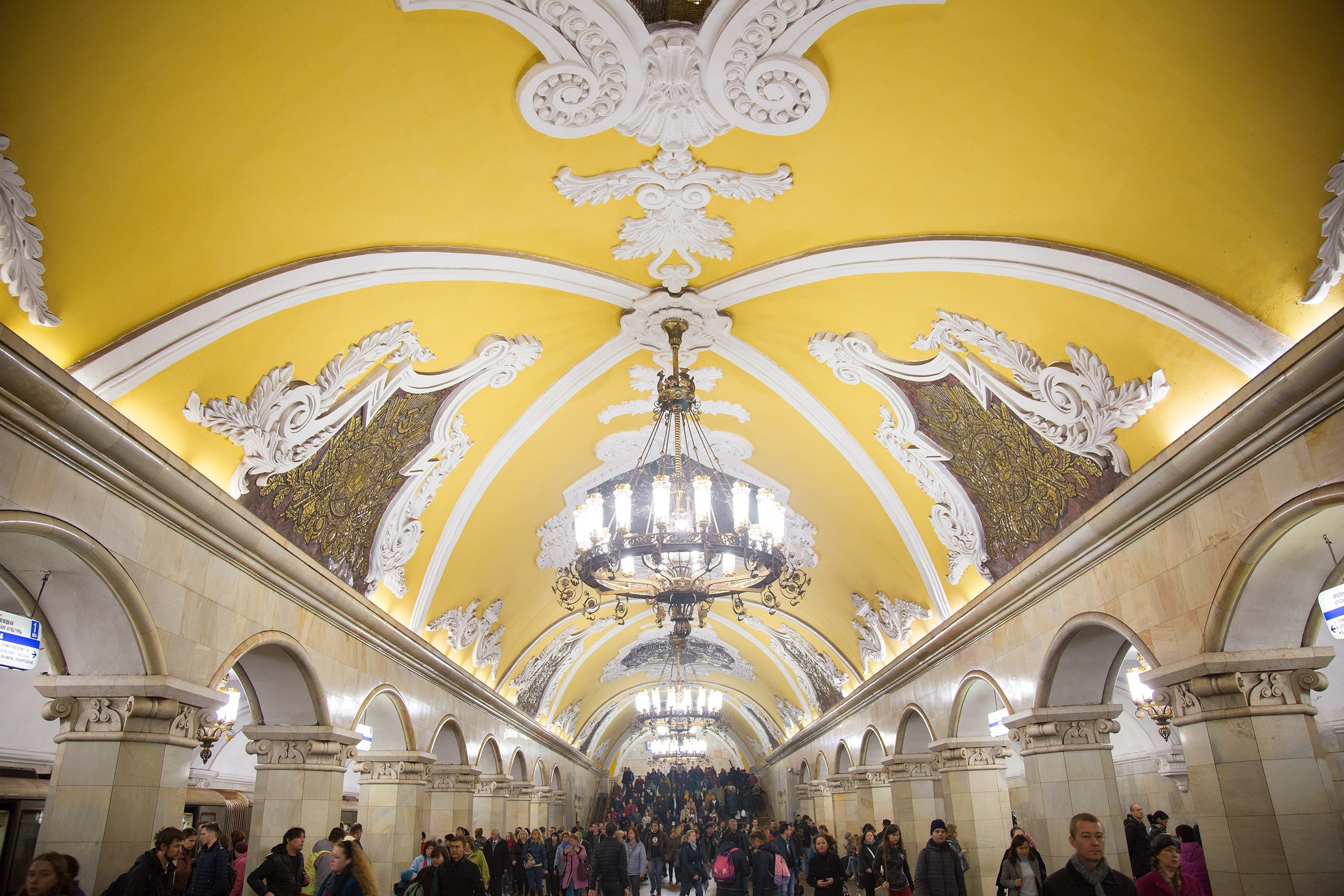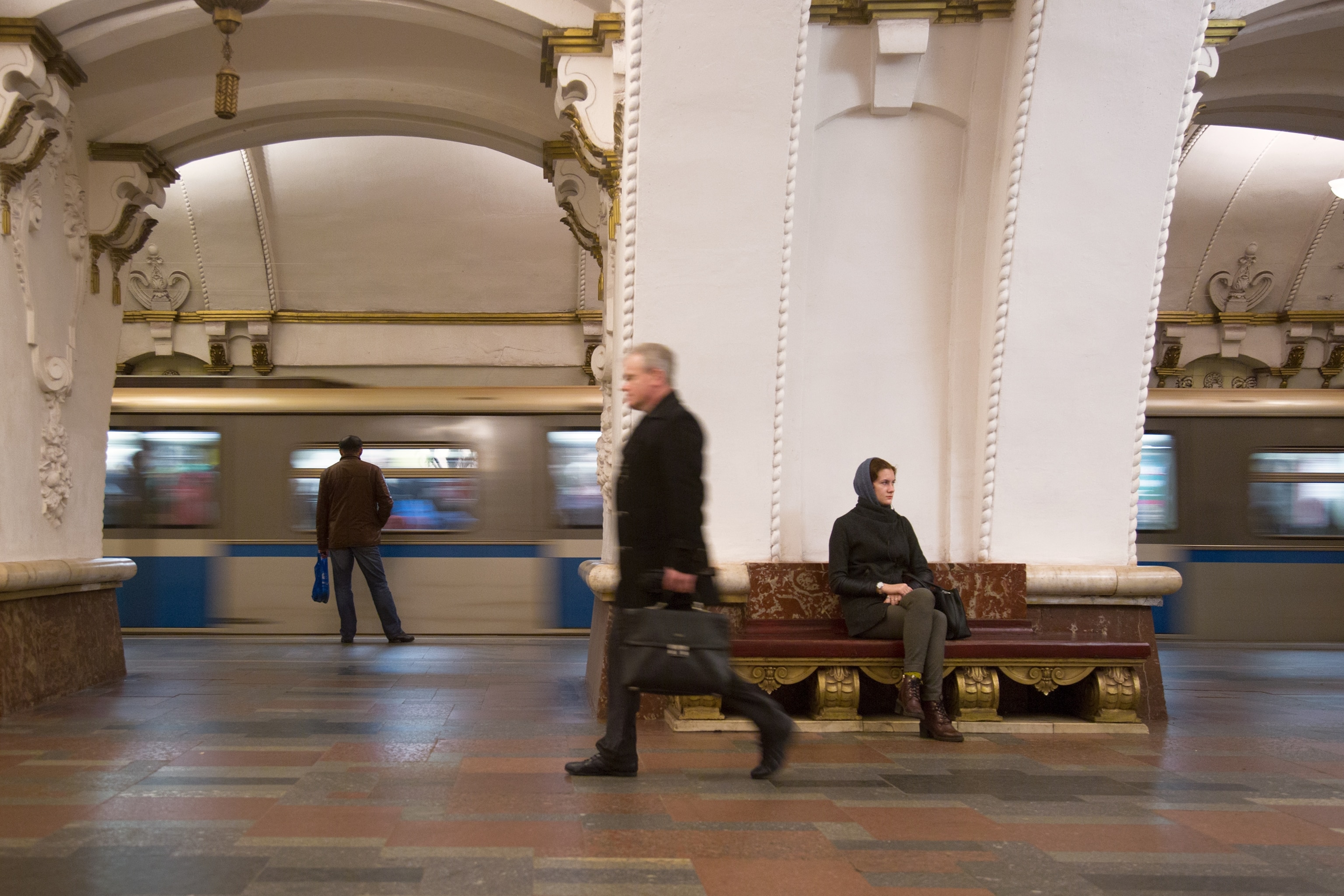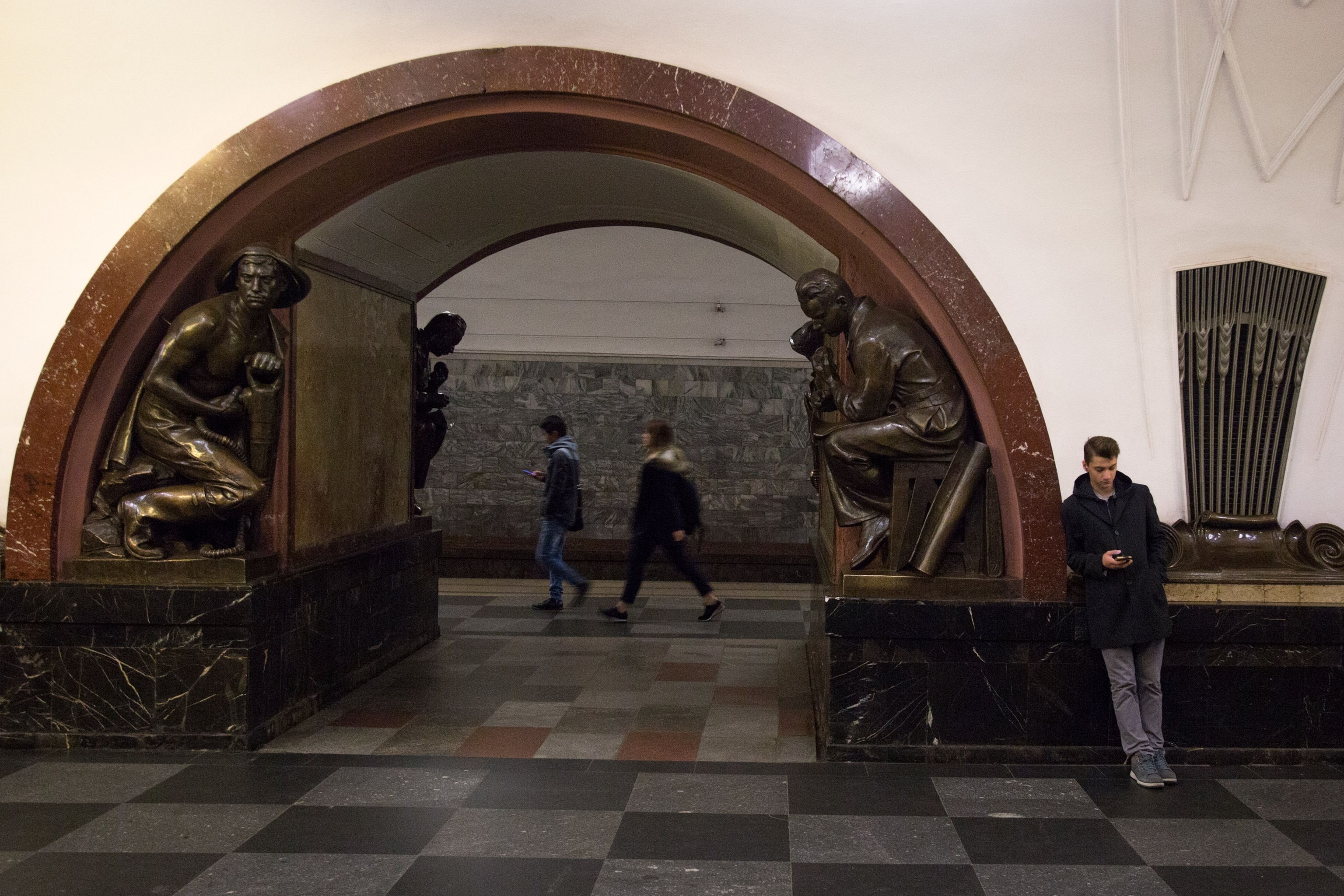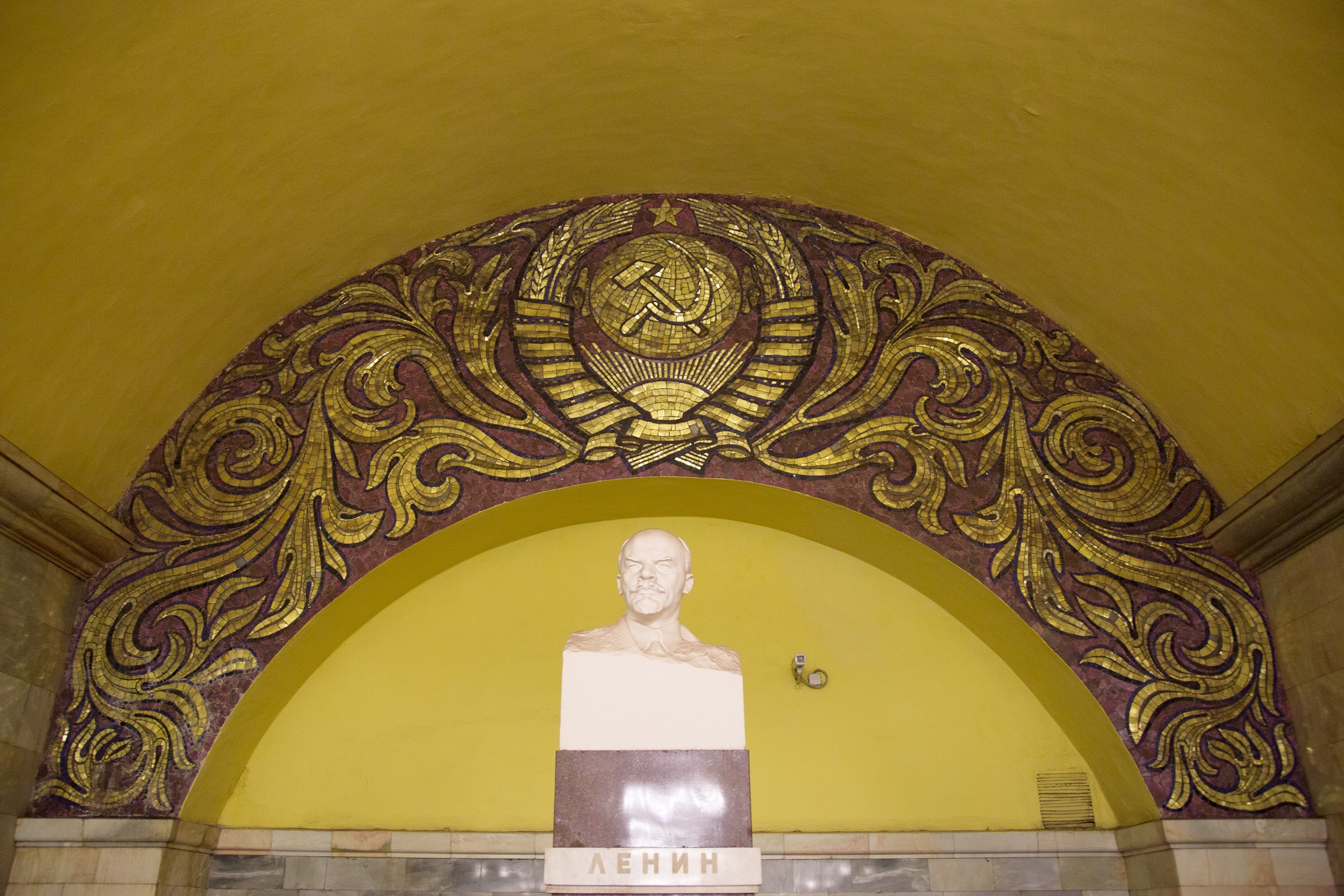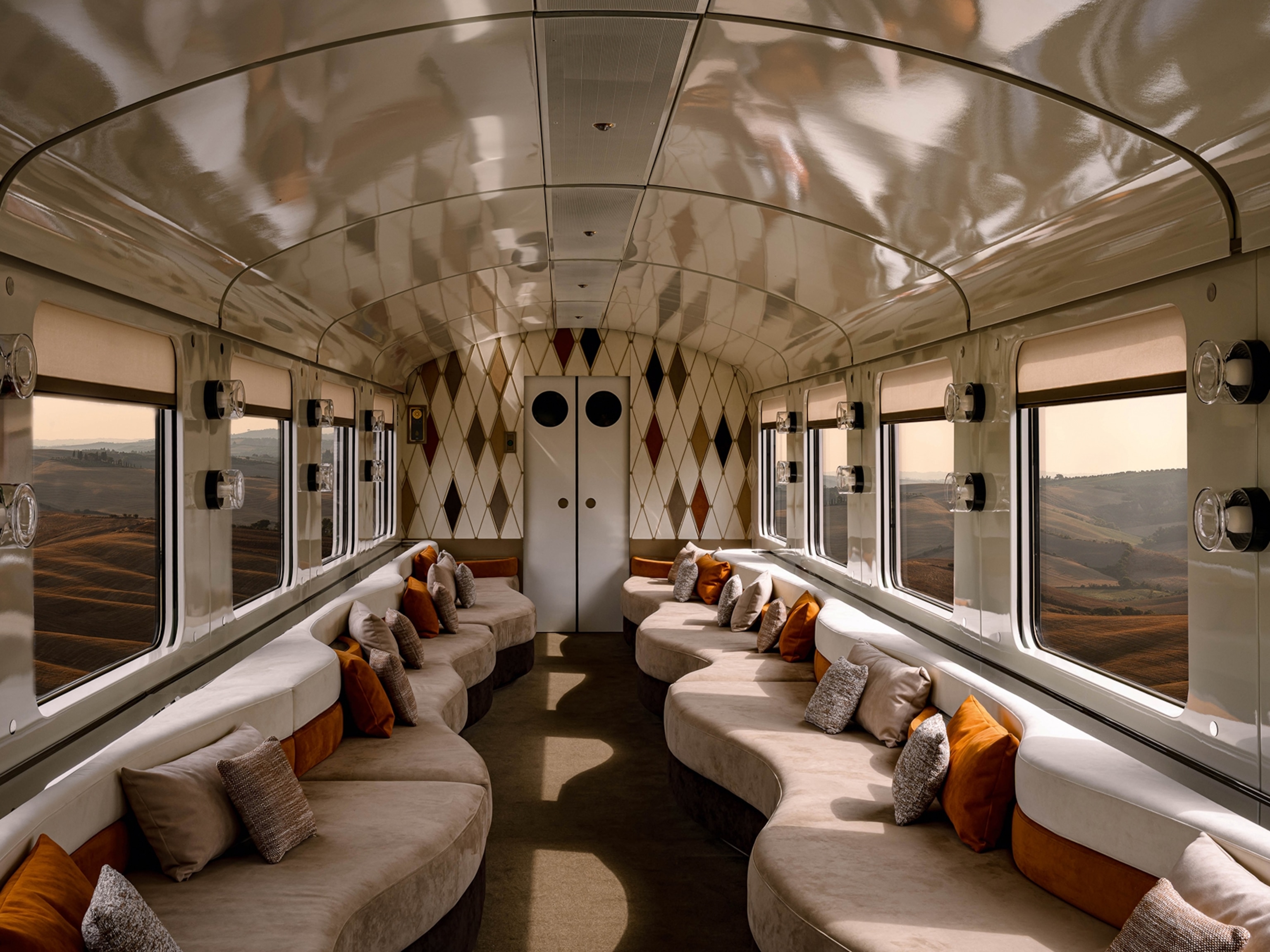Pictures of Moscow's Surprisingly Elegant Subway Stations
These opulent metro stops were designed to bring palaces to the people.
Everyday in Russia’s capital, residents commute like clockwork through an underground labyrinth filled with treasures. Soaring marble walls hold gilded mosaics, sculptures of fallen leaders, and painted scenes from Russian history under crystal chandeliers. Unlike the dirty, utilitarian systems of many cities around the world, the Moscow metro drives through a former–but not forgotten–stage of history that sought to bring palaces to the masses.
The city’s underground railway system opened in 1935 as a Soviet propaganda project. Crowds gathered for parades snaking through the tunnels and choral performances by the Bolshoi Theatre to celebrate the first 13 stations, lauded as a technological advancement over inferior capitalistic societies.
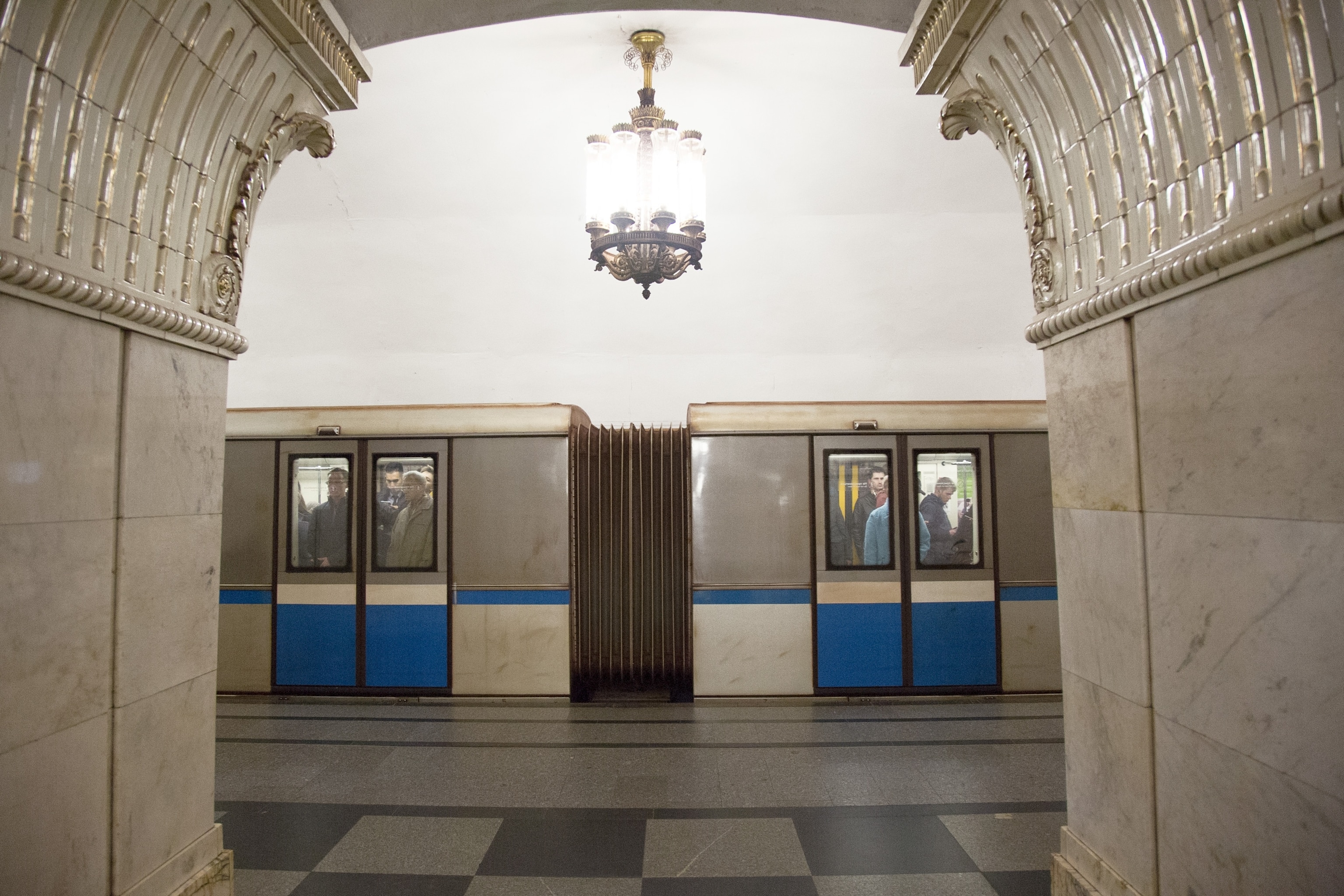
Yet the pomp surrounding the opening failed to mention any shortcomings. According to an architect and expert in urban development of the Soviet Union Philipp Meuser, “The hardships of construction, the forced laborers, the accidents, and the colossal funding–without which this hidden mole-like architecture could never have been achieved–have almost become a distant memory.” [Read more about the cultural gems of Russia's imperial capital.]
Instead, the opulent architecture forecast a bright future for the country. Professor Mike O’Mahony, who researches design of the Soviet Union during the interwar period, explains: “During the 1930s the metro became one of the key arenas for the production and consumption of official visual culture, and many of the nation's most respected architects, sculptors, and artists were employed in its design and decoration. The Moscow metro project thus provided the Soviet state with an ideal vehicle through which the display of art could shift dramatically from the private into the public arena.” Surrounding crowds with the state-sanctioned artistic style allowed the regime to spread its ideology far and wide.
Today the Moscow metro rolls 220 miles through 212 stations, making it the sixth longest in the world. Free of graffiti or vandalism, the system still fills Muscovites with pride. Tourists can join the throngs of locals wandering the subterranean museum-like maze, or take architectural tours through the passages. No matter the final stop, the metro propels all people toward socialist revolution.
- National Geographic Expeditions
